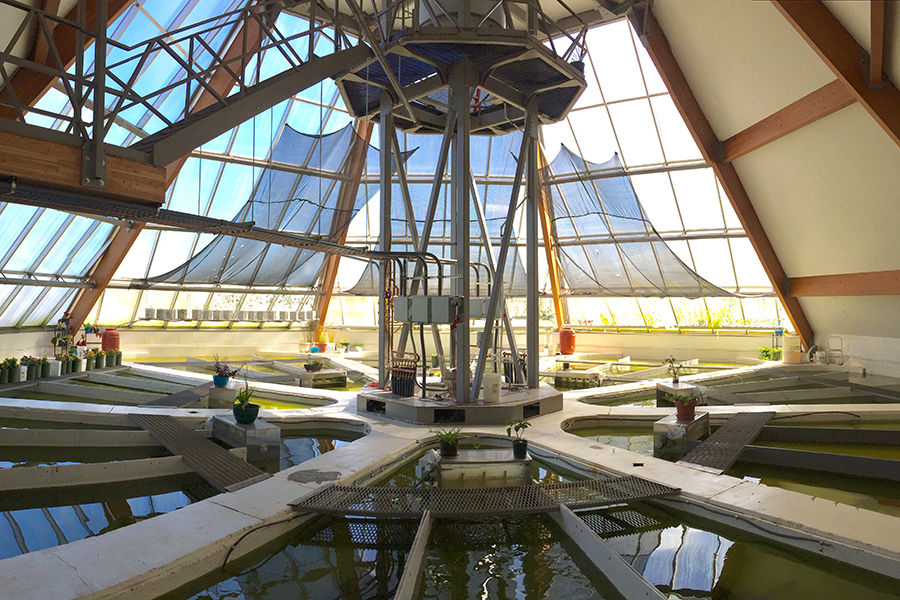Documentary filmmaker and activist Rob Herring is careful to parse out the difference between dirt and soil.
“Dirt is lifeless. Soil is life,” says Herring, director of the award-winning 2017 documentary “The Need to Grow,” which is narrated by acclaimed actress Rosario Dawson and draws a deep connection to groundbreaking work occurring right here in the Flathead Valley.
Exploring the premise that a mere six decades of farmable soil remains on Earth given the current rate of soil degradation, and positing that the future of mankind depends on saving our planet’s dying soil, the film tracks innovators in global solutions, including the pioneering work taking place at Algae AquaCulture Technologies in Columbia Falls, which figures prominently in the film.
Michael Smith is president and co-founder of Algae AquaCulture Technologies Inc. (AACT) and, along with other scientists, has engineered a system that uses industrial waste, like wood chips from the lumber manufacturing process at F.H. Stoltze Land and Lumber Co., to cultivate algae and convert it into electricity-generating methane.
The company built a “green powerhouse” on property owned by Stoltze through a partnership to improve the innovative energy technology at its facility, and a biorefinery to convert mill residuals into electricity and nutrient-rich soil amendments, a valuable byproduct.
The carbon-negative technology, Smith said, will not only help reduce the carbon footprint of polluting industries like timber and coal while providing cleaner, low-carbon energy alternatives and lucrative new revenue streams, but it also accelerates soil regeneration.
Generating a few centimeters of topsoil can take hundreds of years, but at AACT, Smith is performing that work in a week while improving soil fertility.
Soils play a key role in absorbing carbon and filtering water, and soil destruction, due largely to chemical-heavy farming techniques, deforestation and climate change, creates a vicious cycle — less carbon is stored, the world becomes hotter and the land is further degraded.
AACT began operating a demonstration-scale greenhouse on Stoltze land in 2009 while shipping its product to companies nationwide, and was on the cusp of bringing the technology to a widespread commercial-scale level after years of work.
That commanded the attention of Herring and his creative partner Ryan Wirick, who arrived in the Flathead Valley to focus on AACT’s “game-changing” technology in their documentary.
So when a fire destroyed the main powerhouse in January 2015, and the alternative energy company began looking at how to recover from the loss and move forward, Harring and Wirick documented the disaster as well as Smith’s plans to redesign the destroyed unit.
Now, the finished film is making its way through the festival circuit, and on June 16 at 7 p.m. the filmmakers will screen the film in Whitefish at the O’Shaughnessy Center followed by a Q and A and reception with the filmmakers and stars of the documentary. Complimentary food and beverages will be on hand thanks to sponsors like MontanaGrow, F.H. Stoltze Land and Lumber Company, Glacier Distilling Company, Wasabi, The Spice of Life Catering, Grouse Mountain Lodge, Backslope Brewing, Third Street Market, Nelson’s Ace Hardware and others.
To purchase tickets online and watch the documentary trailer, visit theneedtogrow.com/tix.
To recover from the fire, AACT partnered with Acutech, a Columbia Falls-based supply chain manufacturer, which built the powerhouse’s carbon engine as well as all of its 304 stainless components. Using precision water jet and laser cutting, the parts were machined, MIG welded and fabricated at the company’s 16,000-square-foot facility.
Called a Green Power House, the structure resembles a geodesic Lego dome, and the floor is divided into pools in which the algae are grown.
The pools are actually raceway systems designed to optimize the cultivation and harvesting of algae, and, because it takes eight days for an individual pool to grow the algae, one pool is harvested daily.
Carbon dioxide, normally considered an industrial pollutant, is captured and used as a nutrient for the algae as well as some of the nitrogen-rich byproduct from the bioreactors. The algae are then fed into geothermal-heated bioreactors that consume the organic matter and produce methane, which is converted into electricity.
It’s basically a sophisticated form of composting, and Smith likens the bioreactor to a “mechanical buffalo.”
“What does a buffalo do when it eats grass? It poops fertilizer and it flatulates methane,” Smith says. “So the algae are our prairie and the bioreactor is our buffalo.”
